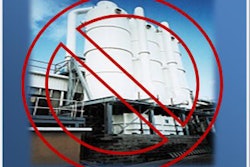The Energy Dilemma
Pharmaceutical companies have to respond to the energy dilemma, and face the challenges of escalating energy costs, increasing legislation, and the pressures of social and environmental corporate responsibility.
It is well understood that energy price increases are outstripping inflation, and this trend is expected to continue as fossil fuel sources become more scarce and harder to extract. Add to this the political instability in some regions with remaining fuel reserves, and natural disasters such as the tsunami affecting Japan’s nuclear plant sending shock waves throughout the industry, thus turning some mature countries away from nuclear generation. Furthermore, the drive by the world’s governments to reduce CO2 emissions requires more expensive energy production, which could include renewable sources, cleaner energy from fossil fuels, or carbon capture. All of this means that energy is going to continue to get more expensive in real terms for the foreseeable future.
Not only will companies face these increased direct costs, but the implementation of environmental policies by many governments means there are further costs associated with energy consumption in the form of carbon taxation, or energy levies designed to drive more efficient energy use.
An even greater imperative for many companies, and one that is increasingly being seen to have real financial and business impact (especially if not treated seriously and comprehensively), is corporate social responsibility for the environment. According to the Dow Jones Sustainability Index, “the annual share performance of sustainability leaders exceeded that of sustainability laggards by 1.48 percentage points during the period 2001-2008.”
It is no surprise then, that with the ever-increasing impact of these cost and business drivers, leading pharmaceutical companies are placing much greater emphasis on managing their energy use.
An energy management program needs to be considered as a four-step life cycle process (see Figure 1).
- Energy audit and measure: Collect the data and analyze.
- Fix the basics: Use only what is necessary with low energy technology to mitigate energy loss.
- Optimize through automation and regulation: Manage energy use and maximize the savings by using energy only when necessary.
- Monitor, maintain and improve: Ensure savings are embedded and sustained.

Figure 1
Energy Audit & Measure
Achieving an active energy management model starts with the collection of data. Monitoring each utility type is essential; there are many in a pharmaceutical plant from primary sources such as gas and electricity to secondary media such as steam, hot and chilled water, and compressed air. Each has their associated energy cost and CO2 footprint.
Utility meter and billing data is a starting point. This can be useful for identifying standing load or idle time consumption, and reviewing tariff suitability, but gives only a highly aggregated view without the granularity necessary to pinpoint energy waste. A metering strategy should be developed and deployed to generate useful information. Strategies may include being able to account for 90 percent of energy by end-use type, individual metering of loads and feeders of a certain size, and to be able to monitor all energy streams by building or production unit. Companies should plan for rolling out metering to existing equipment and set standards for new plant purchases.
Modern meters facilitate remote automatic data collection. Often existing site networks or wireless technology can be used to concentrate data, and share it with users via dedicated PCs or web-based tools. This simplifies the process of gathering energy consumption data, as well as richer information useful for site operations such as electrical maximum demand and power quality — both of which can have their impact on energy costs.
Further data collection should be managed through structured audits of the existing facilities, with clearly defined scope and deliverables. Audit outcomes should focus on an energy action plan with detailed energy saving opportunities backed by implementation cost and savings potential.
Audit approaches can range from the entry level of one or two days for a walk through of the key energy consuming areas to a comprehensive audit with detailed recommendations and estimates for energy-saving opportunities. It is also possible to guarantee savings through a performance contract, which is an agreement with an energy-efficiency expert that identifies and evaluates saving opportunities within a facility and recommends a number of energy equipment retrofits.
The savings generated on utility bills from the newly installed, more efficient equipment ultimately reverts towards paying for the cost of the capital equipment over a specified number of years, thus minimizing the financial risk to the organization. This necessitates a higher level of monitoring before and after interventions, and a good understanding of the variables affecting energy performance, as well as a higher level of involvement from both parties with a more detailed agreement.
Passive Energy Efficiency: Fix the Basics & Reduce the Losses
Passive energy efficiency measures to reduce losses from energy-consuming devices are often considered first. Indeed, a variety of technologies exist to help improve energy efficiency, such as low energy lighting, low loss transformers and high efficiency motors.
Motors typically consume 60 to 70 percent of the electrical energy in a pharmaceutical plant, much of which is attributed to HVAC systems. New motor efficiency standards have attempted to unify the various approaches around the world and now provide benchmarks used by governments to legislate on minimum efficiency performance standards. However, these generally only apply to new motor purchases. In some cases, legislation is phased in over many years and there are generous extensions to allow for depletion of existing stocks.
Companies should create a motor management policy to improve the efficiency of this significant asset base, including:
- Audits to understand the existing asset base and benchmark against current high efficiency standards.
- Identify motor efficiency upgrade opportunities.
- Determine a repair/replace policy (note that rewound motors typically lose 1 to 1.5 percent efficiency each time).
- Don’t rely on long lead in legislation — update specifications for high efficiency motors and include those for OEM purchased equipment. A motor running 24/7 may well consume the equivalent of its capital cost in energy, within weeks.
Any energy efficiency program must also address the human aspects — a person’s activities and actions determine the consumption of energy. Employees need to be engaged and their cooperation and expertise harnessed.
All of these measures are important and make a contribution to energy savings. However, without an active approach to energy efficiency, these passive measures will not be fully effective:
- A high efficiency motor without appropriate control can still waste a great amount of energy, although somewhat less than a standard motor.
- Uncontrolled low-voltage lighting will still consume unnecessary energy, only a little more slowly than conventional lighting.
- Employee energy-saving campaigns tend to work for a limited time. However, without automation and monitoring to embed better practices, things ultimately revert back to business as usual.
To have an effective energy management program, it is essential to embed active energy efficiency into the plant. Automated control and regulation of these systems, and their energy use is the only way to proceed beyond the basic energy-reduction measures to capture full potential.
Please tune into the Chemical Equipment Daily tomorrow for part two of this two-part piece. For more information, please visit www.schneider-electric.com.























